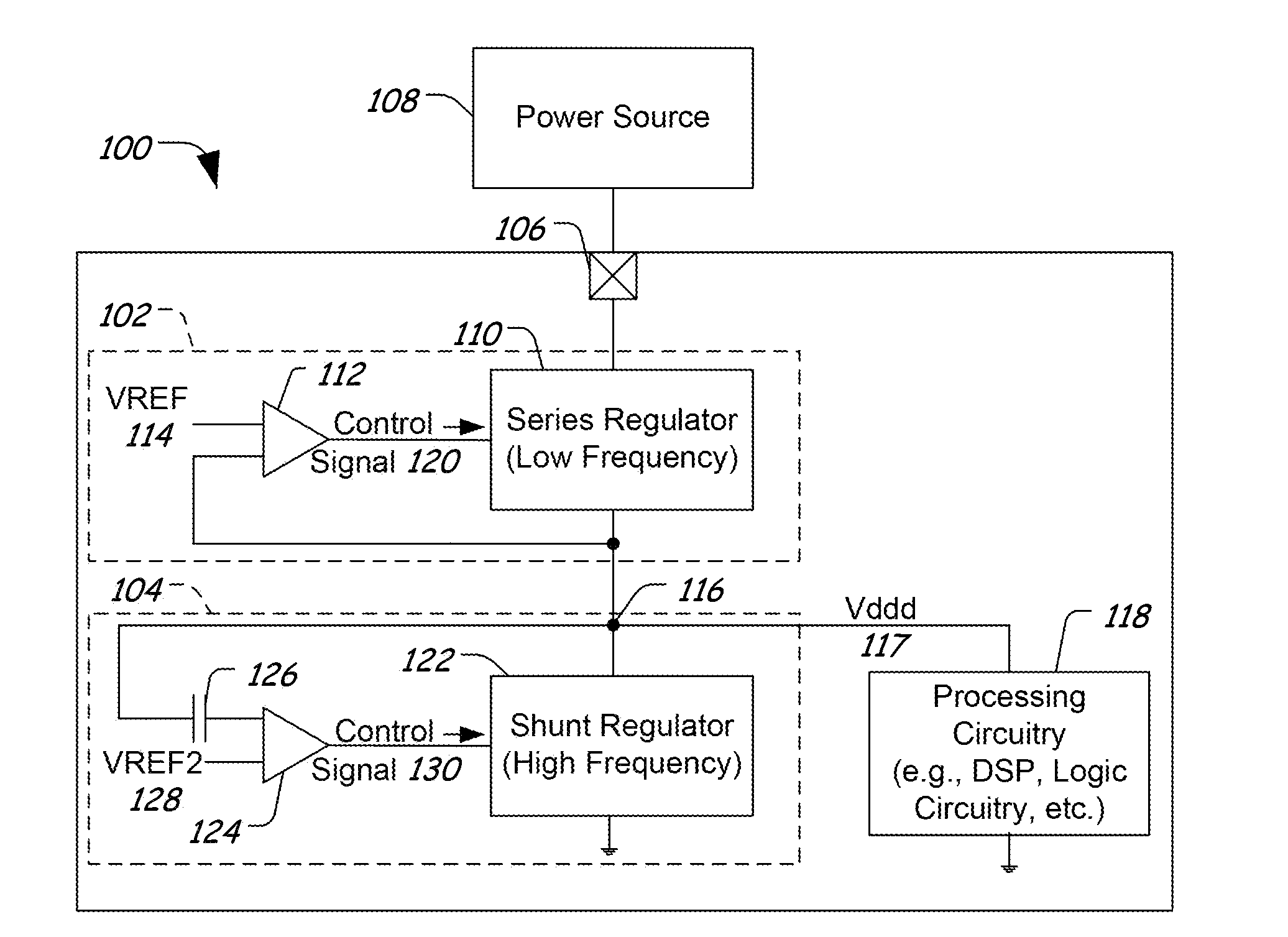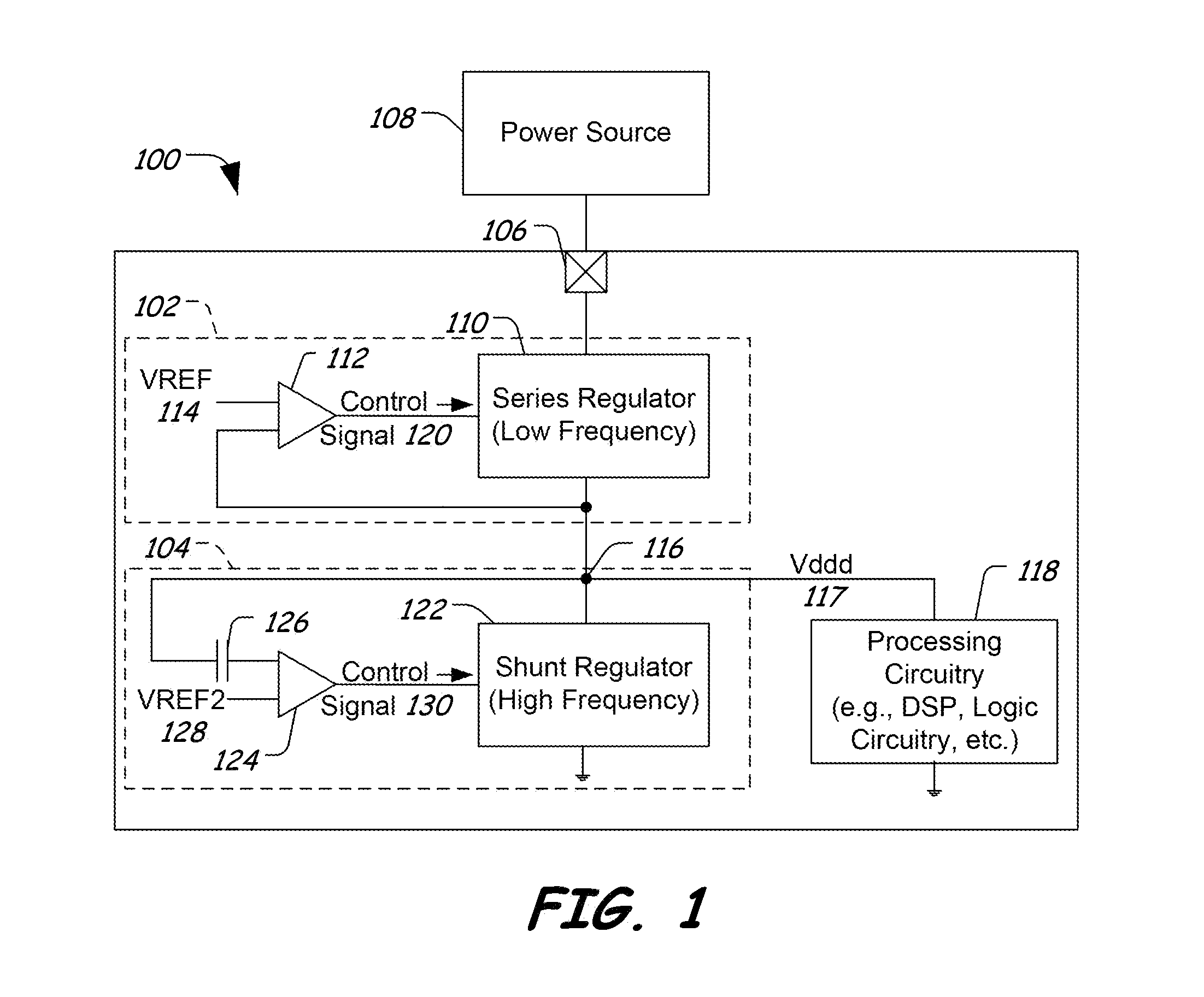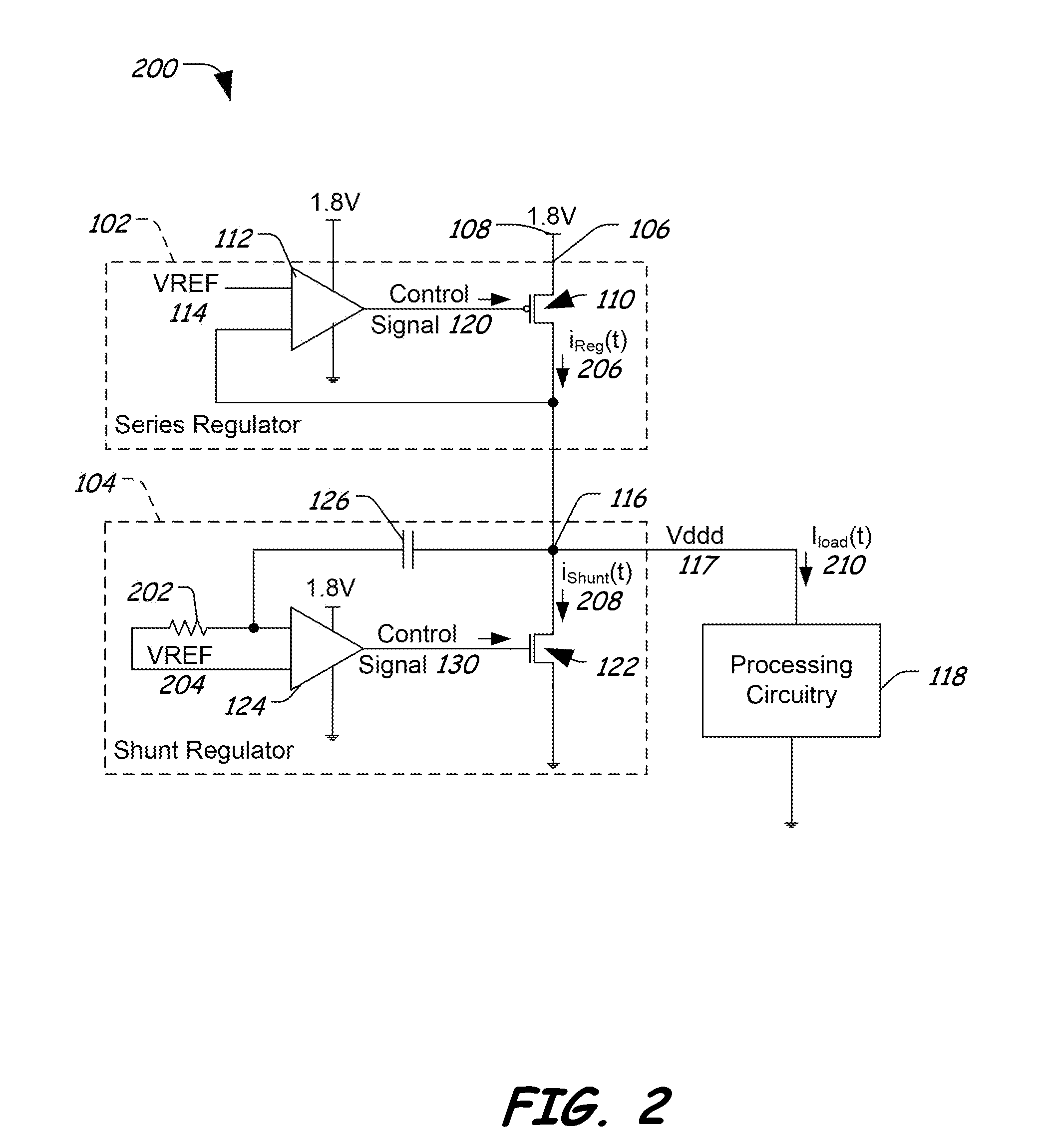Circuit devices and methods of providing a regulated power supply
a technology of circuit devices and power supply, applied in the direction of electric variable regulation, process and machine control, instruments, etc., can solve the problems of increasing the cost of the circuit device, increasing current, and dsp power consumption
- Summary
- Abstract
- Description
- Claims
- Application Information
AI Technical Summary
Problems solved by technology
Method used
Image
Examples
embodiment 500
FIG. 5 is a schematic diagram of an embodiment 500 of the series regulator circuitry 102 of the circuit device 200 depicted in FIG. 2. As shown, the series regulator 110, implemented as a p-channel transistor, has a gate-source capacitance Cgs 506, a gate-drain capacitance Cgd 508 and a drain-source transconductance (gds) 504. A power supply current (i1(t)) 502 flows from the input 106 through the series regulator 110 to the regulated power supply terminal 116. A gate voltage (Vg) 510 is present on the gate of the series regulator 110.
In a typical series regulator, there is a finite reverse power supply rejection resistance due to the drain-source transconductance (gds) 504 and the gate-drain capacitance (Cgd) 506 of the series regulator 110, particularly when the series regulator is implemented as a metal oxide semiconductor field effect transistor (MOSFET) as shown. As the processing circuitry 118 produces current transients on the regulated power supply terminal 116, the supply v...
second embodiment
FIG. 7 is a partial schematic and partial block diagram of the circuit device 700 including series and shunt regulator circuitry configured to provide enhanced reverse power supply rejection. The circuit device 700 includes the series regulator 110 having a source terminal connected to the input 106, a gate terminal connected to an output of the amplifier 112 to receive the gate voltage (Vg) 510, and a drain terminal connected to the regulated power supply terminal 116. As previously discussed, the series regulator 110 provides a regulated current (ireg(t)) 206 to the regulated power supply terminal 116.
The circuit device 700 further includes a first MOSFET 702 having a source terminal connected to the input 106, a gate terminal connected to the gate terminal of the series regulator 110 in a common gate configuration, and a drain terminal that is connected to a drain terminal of a diode-connected transistor 704, which has a source terminal connected to ground. A gate terminal of the...
PUM
 Login to View More
Login to View More Abstract
Description
Claims
Application Information
 Login to View More
Login to View More - R&D
- Intellectual Property
- Life Sciences
- Materials
- Tech Scout
- Unparalleled Data Quality
- Higher Quality Content
- 60% Fewer Hallucinations
Browse by: Latest US Patents, China's latest patents, Technical Efficacy Thesaurus, Application Domain, Technology Topic, Popular Technical Reports.
© 2025 PatSnap. All rights reserved.Legal|Privacy policy|Modern Slavery Act Transparency Statement|Sitemap|About US| Contact US: help@patsnap.com



